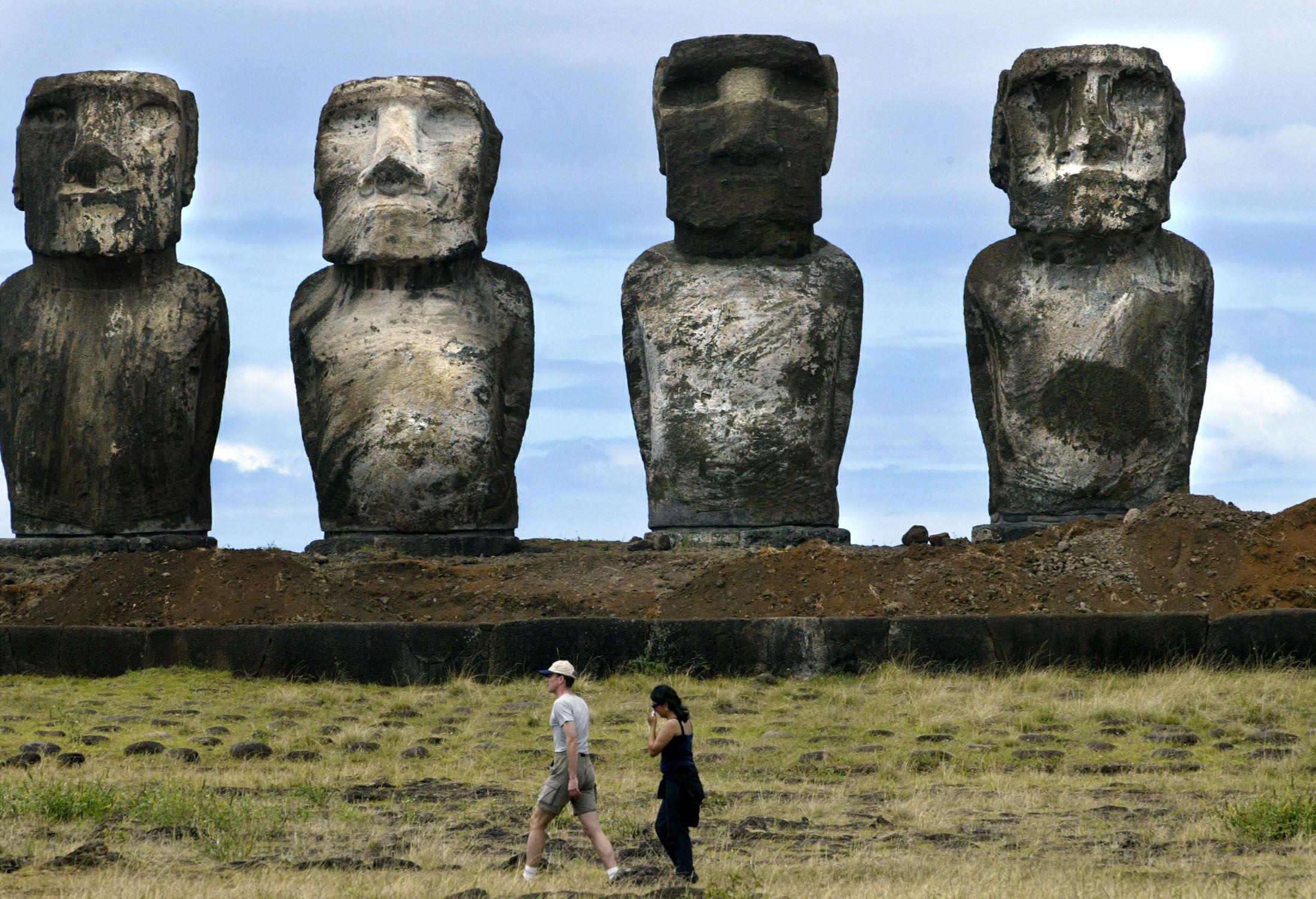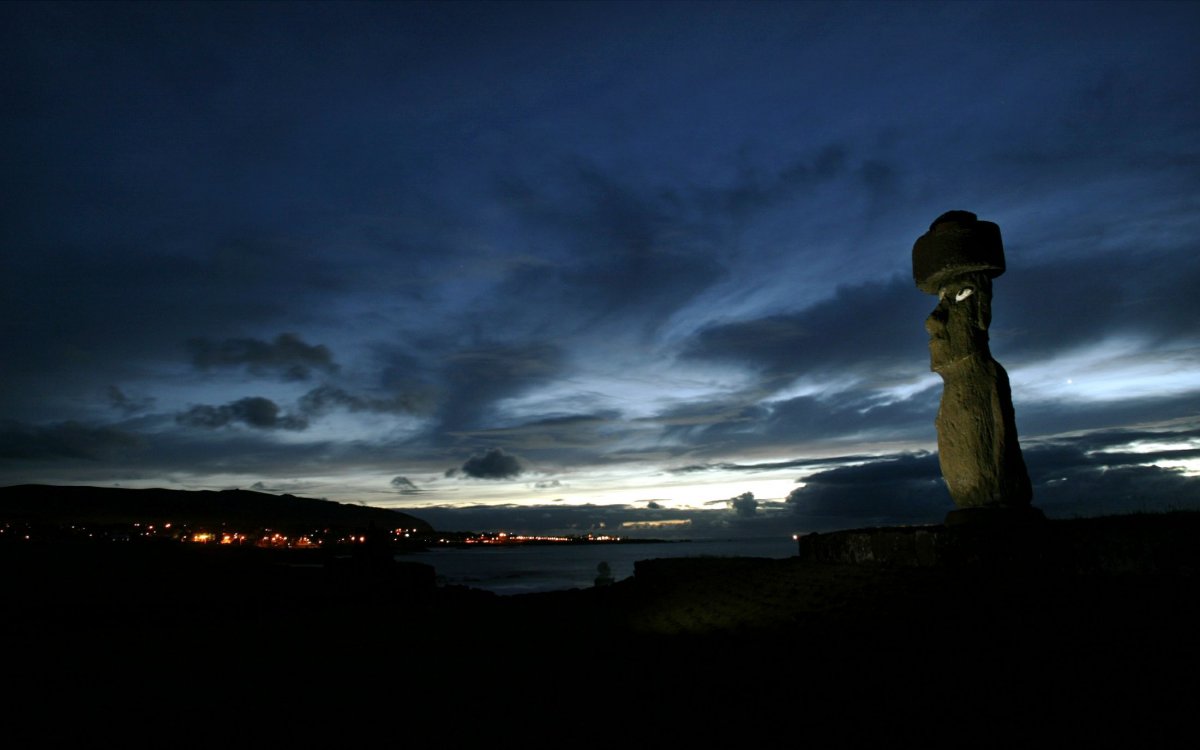
Rapa Nui, Chile—or Easter Island—has monumental statues with massive, stone hats placed on top of them. A recent analysis of these stone hats, known as pukao, shows that the petroglyphs etched into the stone vary wildly, according to a study published in October in Advances in Archaeological Practice. The diversity of the drawings revealed that they were unlikely to be associated with warfare, which counters the common theory that the ancient people of Rapa Nui were a warrior culture.
"The diversity of the petroglyphs challenges that these were symbols of warfare between groups," Carl Lipo, co-author of the study and anthropology professor at Binghamton University, told Newsweek by email. The findings of the study uncovered "quite a bit of diversity in the petroglyphs of the pukao—more so than have been traditionally noted given that we documented all the pukao surfaces."

Polynesians colonized Rapa Nui around 800 years ago, according to the study. They constructed nearly 1,000 monumental statues, called moai, which were topped with the pukao. The pukao are large cylinder-shaped stones made from volcanic rock known as red scoria, weighing multiple tons each. The largest stone hat is nearly seven feet in diameter and weighs over 25,000 pounds. Prehistoric islanders moved the heavy volcanic rocks as far as 7.5 miles.
For this study, researchers examined 70 pukao scattered around the island and eroded by time. A process called "structure from motion" mapping allowed researchers to produce 3D computer models to study the pukao in greater detail. They discovered that there were far more drawings carved into the hats than previously believed.
"Overall our findings with the pukao show that multiple communities were working on building and transporting these items at the same time," he said. "We don't see evidence of exclusion of resources, where some members of communities had differential access to resources."
The history of the famous Easter Island is not well understood. New bits of information about the island's people could continue to be gleaned from the pukao.
"These monuments represent the result of communities working together and clearly had tremendous positive value," Lipo said. "As we've learned more about the nature of the resources on the island that are needed for community survival, we see that sharing and cooperation was a key factor ... The pukao data are another piece of the broader puzzle that we are assembling for the island."
Uncommon Knowledge
Newsweek is committed to challenging conventional wisdom and finding connections in the search for common ground.
Newsweek is committed to challenging conventional wisdom and finding connections in the search for common ground.
About the writer
Sydney Pereira is a science writer, focusing on the environment and climate. You can reach her at s.pereira@newsweekgroup.com.
To read how Newsweek uses AI as a newsroom tool, Click here.








